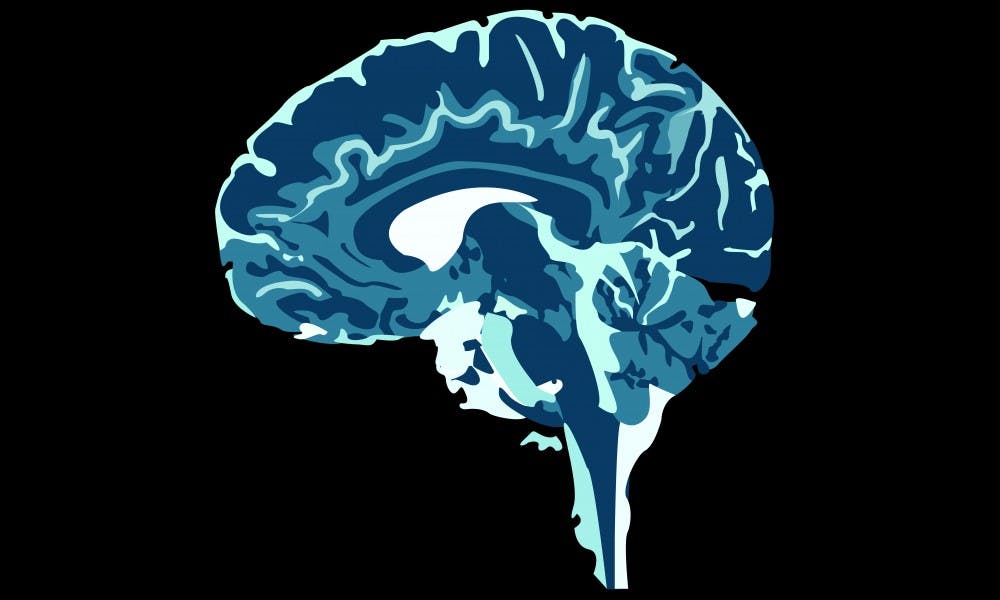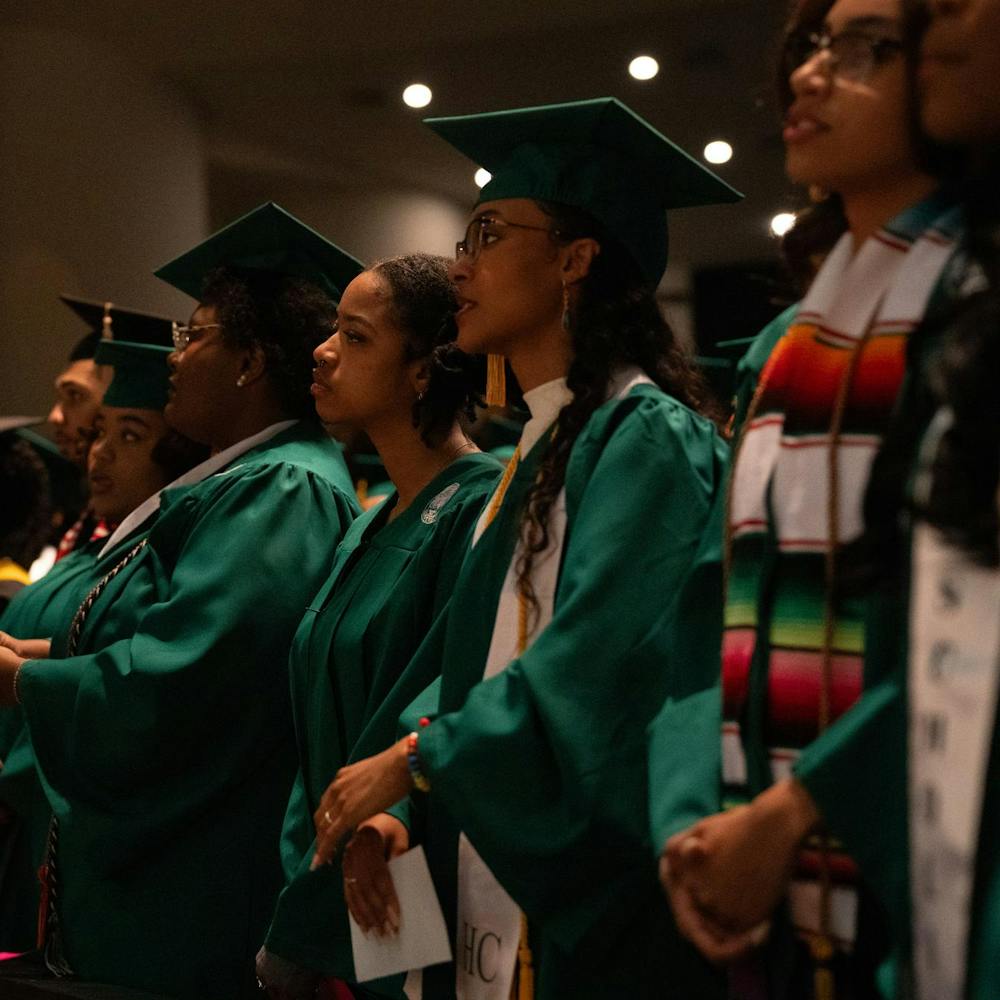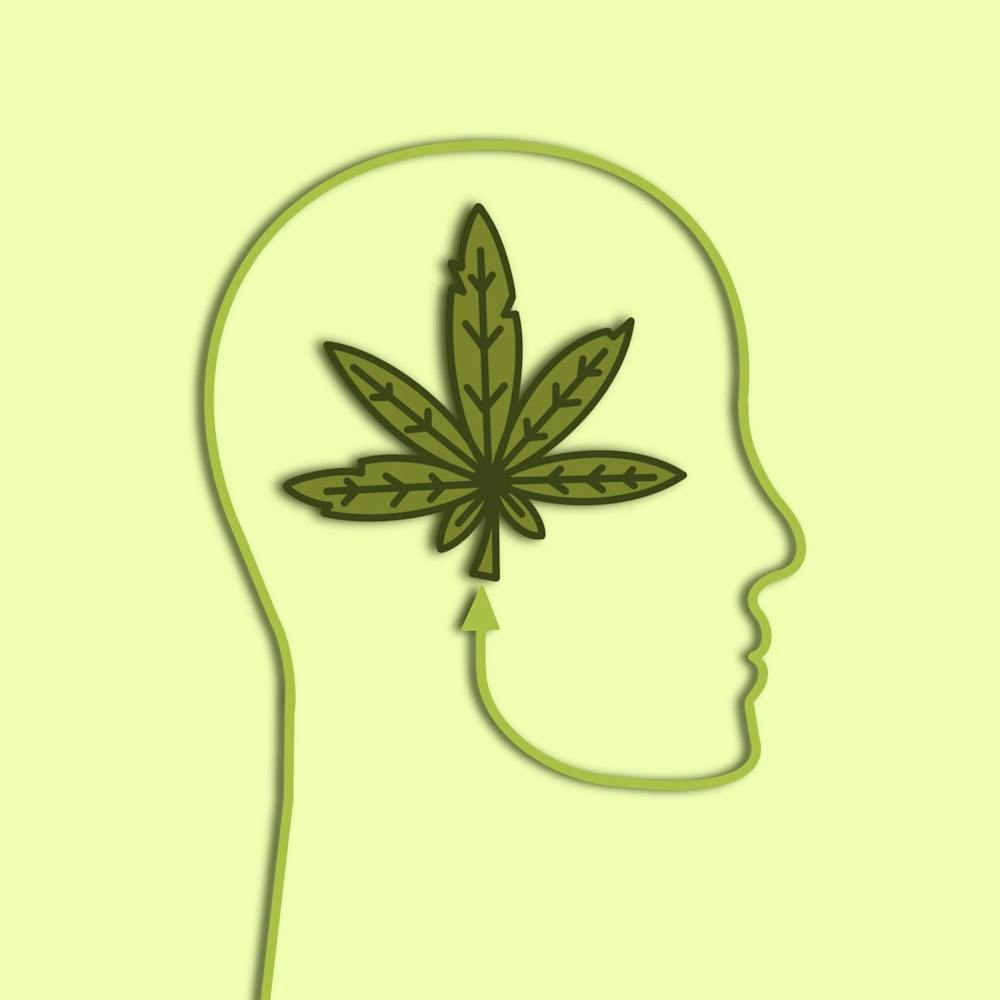Two linemen of the same stature collide on the line of scrimmage, the force reverberates from the hit. One of the linemen absorbs the blow, the other stands up without trial.
Concussions, a traumatic brain injury that can occur from a blow to the head or body, are different for every individual. A hard hit to the head or body can differ for each athlete depending on a variety of factors.
No one concussion is the same for every athlete, making research and diagnosis complicated.
“There is no such line for every single person,” MSU journalism professor Joanne Gerstner said. “Everyone concusses in a different way and has a different threshold.”
Gerstner has been researching concussions for several years and is currently working on a book about them.
Addressing the problem
When Marcos Dantus, an MSU chemistry professor and researcher, emailed MSU professor Gary Blanchard stating the two of them should put their heads together and contribute to the NFL’s head impact competition for new technology to identify concussions, Blanchard couldn’t resist.
Blanchard said scientists have a nose for important problems to solve.
“If we identify an important problem and we think that we can bring something to the table, then we’ll go for it,” Blanchard said.
Blanchard said that the awards went to research on imaging, blood tests and modeling concussions. He said no rapid on-site evaluation was included.
The decision was to create a physical impact sensing device that provides magnitude and impact location.

Blanchard said Dantus and himself are not experts on concussions but wanted to create something that could aid the problem. While they were going through the process and testing, MSU neurologist Dr. David Kaufman assisted them.
“When players come off the field, if we are suspicious, understanding the G-force that was absorbed by the student athlete is the value,” Kaufman said.
Kaufman said the headband will aid trainers and neurologists but an actual diagnosis can only come from a clinical exam.
“Concussions are not a yes no, red light green light thing,” Gerstner said. “It’s very much about working with an athlete to see where they’re at and run them through tests and kind of get a feel for what’s going on.”
Kaufman is on the MSU football sideline for every home and away game in addition to two practices each week.
Kaufman said if a player were to come off the field in a seemingly healthy state with a perfect examination, but the sensor displays they absorbed 80 G-forces then there is probable cause to make sure nothing was missed.
“I think the interesting thing about this is the lightweight nature of it and that it can be used in non-helmeted sports like field hockey or soccer,” Kaufman said. “That makes it very useful.”
Making the model
Thirty seconds — a bowling ball with a helmet and sensor strip on drops to the ground — Dantus’ son retrieves the ball and must change the sensor strip with a time crunch.
Dantus said Kaufman came to their earlier trials and explained that he needed to make a decision in thirty seconds between plays to determine whether everybody on the field can stay on the field.
Dantus said Kaufman needed enough time to see the sensor and determine if a significant impact had taken place and replace the sensor if needed.
Blanchard and his research team have come a long way since their early trials in the summer of 2015. The team no longer uses a bowling ball but has evolved their dynamic.

The team goes through a full process in lab while testing the sensors within the headband.
Dantus and Blanchard’s testing of the headband begins with placing the band on a human mannequin head. Then, a helmet is placed on the head, just like a football player would wear during practice.
Blanchard said the impact involves a drop from a determined amount of feet up from the target.
The accelerometer measures the impact of G forces from the drop experienced by the head.
Kaufman said the simplicity of Blanchard’s headband with sensor arrays makes it valuable. He said many complicated, technologically inclined indicators are expensive and difficult for players.
Through the assistance of MSU head athletic trainer Dr. Sally Nogle, Blanchard was able to test on actual players. He said the football team’s role brought real life data to their research.
“It doesn’t matter what you do in the lab,” Dantus said. “It means nothing until a real player wearing a real helmet goes out on the field.”
Blanchard said approximately five MSU football players participated during the fall season wearing the headbands in practice time, all in different capacities.
Dantus said through human trials the sensors were tested with real game occurrences. He said size, sweat, heat and friction were now a reality for the headbands testing.
Dantus said players were hesitant but eventually got used to the idea of the trials and use of the headband.
Blanchard said the sensors within the strip work differently than most others. He said the strip isn’t electronic, hackable or built into a player’s helmet.

Concussions — an indiscriminate issue
The conversation surrounding traumatic brain injuries has reached national discussion with football as the main talking point.
“Women and girls in general have lower neck strength than guys,” Gerstner said. “Our necks can whip a little faster or kink a little easier than guys. When that happens that means we can get easier susceptibility to concussions.”
Gerstner said MSU has a large amount of sports that can cause concussions but football, as an important revenue sport for the school, can take precedence.
“We are fully aware that female student athletes are more vulnerable to concussion than males and that the same G-force could have a larger impact regarding concussion on females,” Kaufman said.
In females, soccer is at the highest rates of developing a concussion. In 2010, the NCAA GOALS survey estimated 13.9 percent of female soccer players reported at least one concussion. The players also reported multiple concussions at 7.1 percent rate.
Kaufman said it is important that Blanchard’s device first be validated. He said it cannot be commonly used among sports until it is accurate enough.
“We wanted something that could be widely deployable,” Blanchard said. “There are many places that this technology could ultimately be deployed.”







